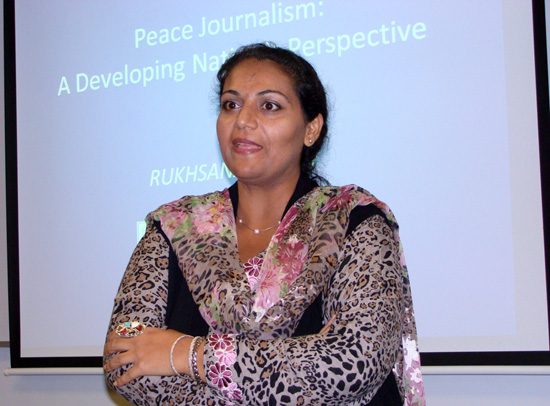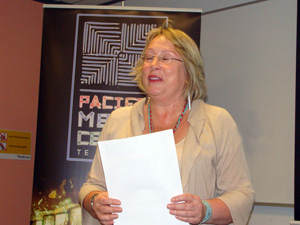
Journalists have an opportunity to play a role in resolving the conflicts they report on by engaging in “a deeper investigation of the truth”, says a media educator.
Speaking at a seminar hosted by the Pacific Media Centre, Rukhsana Aslam described journalists’ reports as “forming the first draft of history”, and called for the media to promote conflict resolution through an approach to reporting known as “peace journalism”. “It is clear that the media has a role to play in conflict situations. The nature of that role – as a perpetuator of conflict or agent for peace – largely depends on the framing and agenda-setting of the media,” said Aslam.
“It is clear that the media has a role to play in conflict situations. The nature of that role – as a perpetuator of conflict or agent for peace – largely depends on the framing and agenda-setting of the media,” said Aslam.
The concept of peace journalism can be differentiated from traditional conflict reporting, also known as “war journalism”, by considering the framing and focus of the reporting.
A war journalism approach focuses on a dispassionate reporting of events taking place during a conflict, often including body counts and the nature of the weaponry used.
It does not include analysis of the processes leading up to the event, and tends to view conflicts in terms of defeat or victory for either side.
The principle of “objectivity” is often cited as the reasoning behind a lack of opinion or analysis in the reporting, said Aslam, a Pakistani journalist who contributed a chapter to a recent global book on the topic, Peace Journalism, War and Conflict Resolution.
Alternative solutions
The peace journalism approach involves the analysis of processes behind the conflict, providing a platform of communication for conflicting sides, and suggesting possible alternative solutions to lessen the conflict.
While a physical account of the event is provided, peace journalists also include the structural and cultural causes of violence as it impacts on people’s lives.
Aslam cited a recent article about the death of Osama Bin Laden by Dr Richard Jackson, a professor of International relations at Aberystwith University in Wales, as an example of what peace journalism should be doing.
While many media outlets were running reports of the circumstances of Osama Bin Laden’s death, Dr Jackson’s article contextualised the event and raised questions that were “prudent and relevant”, and which provided a different perspective to readers.
The Pacific Media Centre published Dr Jackson’s article within 24 hours of the Bin Laden story breaking.
Associate Professor David Robie, director of the PMC, said the centre was probably the first media outlet to publish the article in the Asia-Pacific region, and supported Aslam’s call for journalists to contextualise information within their reports.
“There needs to be a rediscovery of the news value of context, which is often not as highly valued as others,” he said.
Aslam described conflicts in the Pacific – such as the 10-year Bougainville war, the Solomon Islands ethnic violence, and the current Fiji coup – as having put pressure on the region’s media over issues of balance and fairness in reporting, suggesting that there was still much room for improvement for journalists reporting on conflict in the Pacific.
“In most of these conflicts, peace has not been achieved,” she said.
“Fiji has had four coups in more than two decades, and still the tensions roll on”
Interpreting events
While Aslam was careful not to propose that peace journalism was the answer to ending all conflict, she did suggest that the role of media in conflict situations could have an impact on conflict resolution and peace building.
“It is not the role of the journalists to organise the peace settlement itself," said Aslam.
“Journalists can at best offer a platform to the conflicting parties and even interpret events for the audience”.
Aslam, who is also a doctoral candidate at AUT University, said the use of the peace journalism approach to conflict reporting required a conscious decision on the journalists’ part, but that ultimately it served as a contribution to society.
“The value of peace journalism lies in the possibility of it bringing a positive change in the media’s coverage of conflict situations and a better understanding to the people as to why they happen”



